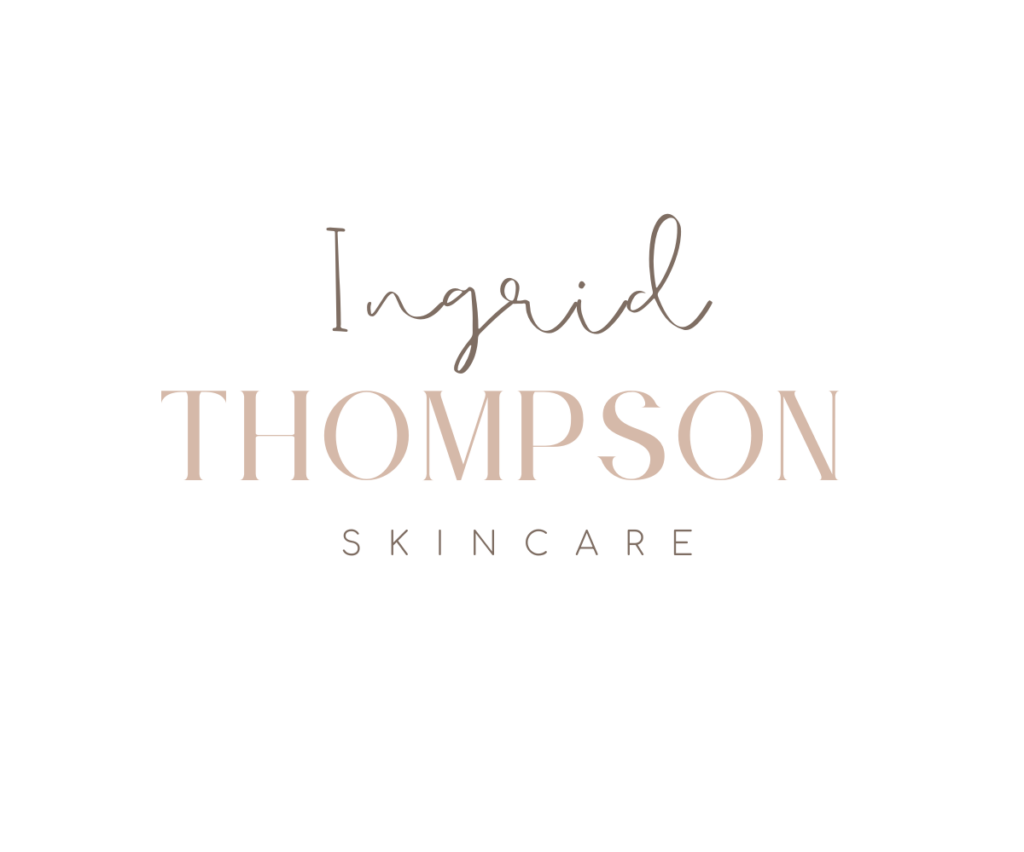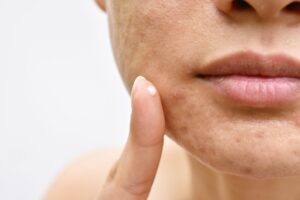Ah, mid-summer! The time when the sun kisses our skin a little more, bikinis make their annual grand appearance, and laughter echoes from every beach and backyard BBQ. But amidst all this summer glory, there’s something else that might be making an unwelcome debut: pigmentation.
While we’re out soaking in the rays and fun filled days, our skin sometimes decides to bring its own party favors in the form of melasma and sunspots. But fear not! I’ve got some illuminating insights on this topic, just for you. Together, let’s make sure your summer is all about clear skies …..and clearer skin!
Have you ever noticed patches of darkened skin on your face that just won’t fade? You may be facing a common skin condition called melasma. Often triggered by hormonal changes, sun exposure, liver congestion and digestive imbalances, melasma presents itself as brown or grayish-brown patches, commonly on the forehead, cheeks, bridge of the nose, and above the upper lip.
Melasma is not like any other type of pigmentation because it is highly reactive to heat and light exposure. Common “fading treatments” such as chemical peels, lasers and hydroquinone although may provide momentary relief, can often trigger a darkening of spots. It’s no surprise that a gentle, progressive holistic approach is the best way to treat stubborn melasma and keep those dark spots at bay.
Our skin is the largest detoxification organ of the body, and when we aren’t eliminating properly (via the lungs, kidneys, and colon) the skin will be used as an escape route for toxins and waste that the body needs to get rid of.
Each of us carries a specific genetic code that regulates the amount of melanin our skin produces. While we all have generally the same amount of “melanocytes” or melanin producing cells in our skin, how much melanin is produced depends on our unique heritage, environment, skin health and internal well being.
Tyrosine, an amino acid found in melanocytes in our skin, plays a role in helping produce melanin. When trauma from light, heat, environment or internal sources is present, the resulting inflammation alerts the “tyrosinase receptors” to this threat and it produces melanin for immediate protection. This is a normal and healthy function of our skin, but sometimes these receptors are overproducing or malfunctioning, resulting in “hyper”pigmentation, uneven patches and discoloration.
As we age, melanocytes (pigment-producing cells) decrease by about 10-20% per year, so the remaining melanocytes overcompensate by producing more, creating spotty, uneven texture.
A simple way to understand how pigmentation works is to think about how bananas change color from yellow to brown. If the tyrosine in a banana creates the yellow color of the peel, tyrosinase is responsible for causing the peel to oxidize and turn brown. In our skin, tyrosine is what gives us beautiful tan skin, tyrosinase is responsible for hyperpigmentation.
A holistic, gentle approach is VITAL to long term pigment correction.
Melasma is estrogen based so is important to follow a clean, organic diet, eliminate irritants, and use lighteners that don’t make you sun sensitive in combination with tyrosinase inhibitors.
Topical Ingredients such as Vitamin A, licorice root, azelaic acid, Arbutin, kojic acid, niacinamide, mushroom extracts, pumpkin, peptides are top picks for lightening hormonal based acne.
Support your liver by eating foods such as apples, apricots, arugula, asparagus, dulse, bananas, berries, brussel sprouts, celery, ginger and tomatoes.
Eat foods rich in antioxidants such as oranges, grapefruit, mangoes, blueberries, strawberries, carrots, bell peppers, spinach sweet potatoes and broccoli.
Take supplements such as B-12, Zinc, Vitamin C, Glutathione, CoQ10, licorice root, nettle leaf, iodine, ashwagandha, cats claw, melatonin to help boost antioxidant support, regulate estrogen and support detox.
Omega fatty acids reduce inflammation, strengthen cell membranes and helps control how the body responds to UV rays thereby protecting the cell from free radical damage from sun exposure. Eat omega rich foods such fish, flax seeds, chia seeds, avocados, leafy greens, walnuts, macadamia nuts, primrose borage oil, black cumin seed oil and coconut oil.
In order to open your bodies detoxifcation pathways take spirulina, chlorella, and zeolite.
In order to reduce detox symptoms stake activated charcoal, digestive clays and digestive enzymes.
Ditch the plastic! Replace tupperware and plastic water bottles all plastics with glass or stainless steel.
Always use a physical sunscreen whilst in the sun!! Stay away from chemical sunscreens also known as organic sunscreens, work by absorbing ultraviolet (UV) radiation and converting it into heat. Some of the chemicals used in these sunscreens have raised concerns due to potential skin irritation, allergenic reactions, hormone-disrupting properties, or environmental harm. Here are some of the most commonly cited chemical sunscreen ingredients that have been labeled as potentially concerning:
Oxybenzone (Benzophenone-3): One of the most frequently flagged chemicals, oxybenzone is believed to be a hormone disruptor and is linked to increased risk of endometriosis in women. It’s also harmful to coral reefs.
Octinoxate (Octyl Methoxycinnamate): This chemical can produce free radicals, potentially leading to skin aging and DNA damage when exposed to sunlight. It’s also been identified as a potential endocrine disruptor and can be toxic to marine ecosystems.
Homosalate: Suspected to be an endocrine disruptor, it may interfere with hormone activity in the body.
Octocrylene: Can cause skin allergies and, like octinoxate, can produce free radicals when exposed to sunlight.
Avobenzone: Can break down when exposed to the sun, leading to the potential release of harmful free radicals.
Octisalate (Octyl Salicylate): While considered less irritating than some other chemicals, it’s still a potential allergen for some people.
Understanding melasma is just the beginning. To embark on a journey towards even-toned skin, I invite you to a schedule a free consultation. Together, we’ll tailor a plan that addresses your unique skin needs and illuminate your path to radiant skin.





